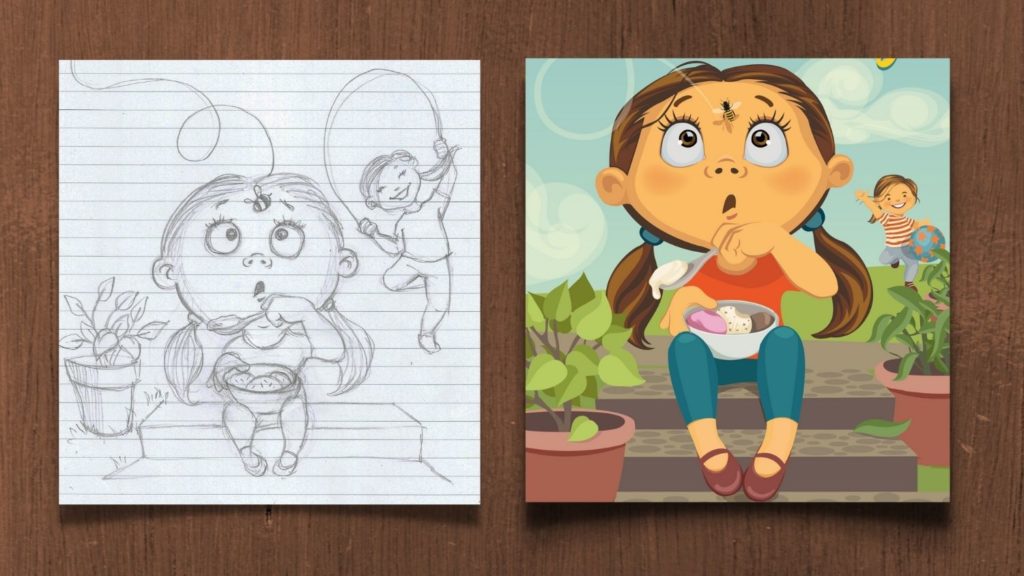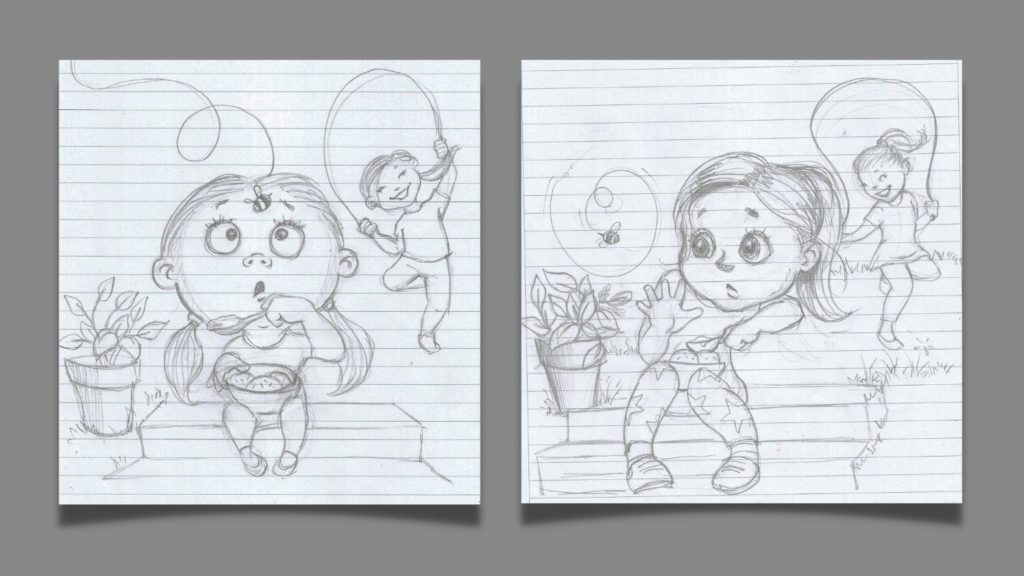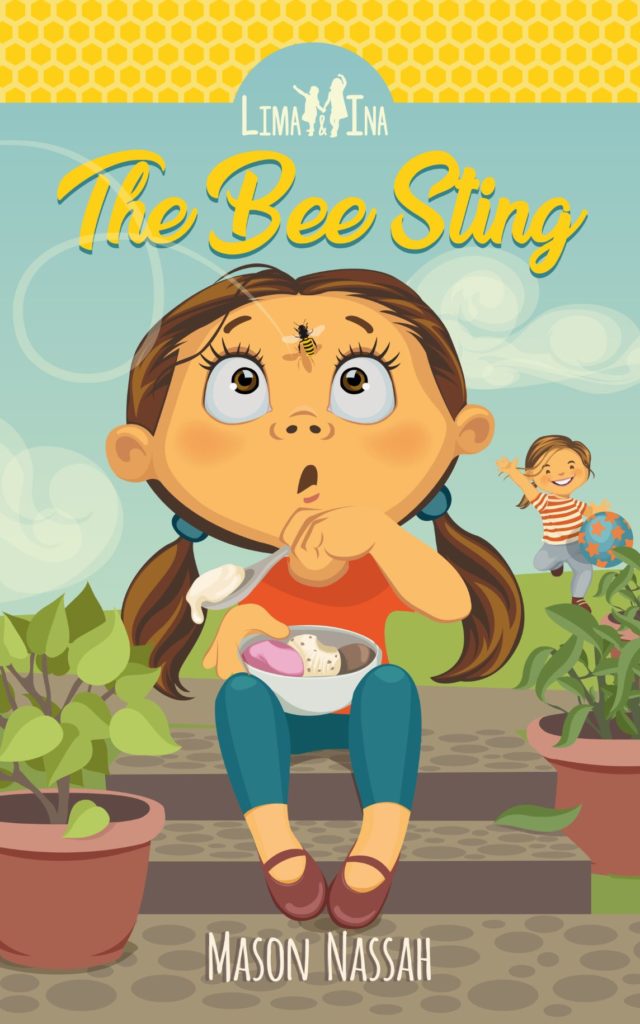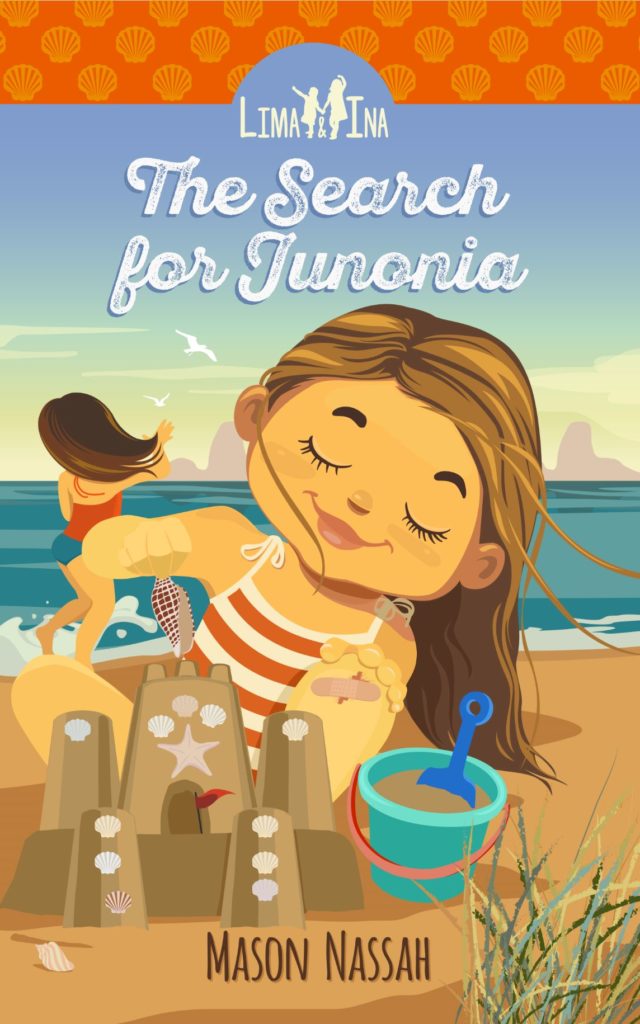
Around four years ago, I used a fake name to publish a couple of children’s books.
They were written for an audience of two: my daughters.
The idea was to keep it a long-term secret.
However, one of my daughters recently found out that I’m the author.
Here’s the backstory.
**********
I’m a horrible storyteller
When they were seven and three years old, my daughters would always ask me to tell them a story.
I had no problem reading one from a book, but I could never deliver a good story from memory. The art of storytelling comes naturally to some people, and I guess I’m just not blessed in that area.
One night, I was forced to think of a story because I didn’t have any new books to read to them.
So I came up with one that was based on a childhood experience.
When I was young, I went with my family on a trip to Italy, and a bee stung my younger brother. As a result, I developed a serious phobia of bees.
The phobia pushed me to start reading everything about bees and how they behave. That eventually led me to manage my fear better and made me fall in love with reading in general. So I thought that would be a good story to tell them.
However, I wanted to add a twist to it by coming up with a semi-fictional version of my experience. Instead of talking about my brother and me, I would tell them the story from the perspective of two young sisters.
I thought this would make it a bit more relatable to them as little girls. I would also change some of the details around to throw them off if I ever told them about my actual experience in the future.
As I was starting to tell them the story, they interrupted to ask about the names of the two sisters.
On a whim, I scrambled the letters of my daughters’ names and rearranged them into new ones. For my eldest, Nai, I came up with “Ina.” And for my youngest, Mila, I came up with “Lima.”
And so I told them the story of Lima and Ina and how Ina got stung by a bee, developed a phobia, and overcame that phobia through reading and learning.
They loved it and wanted more.
So I promised them that I would tell them a new story about Lima and Ina every Saturday night.
Ever since that day, I would sit with them in bed on Saturdays and tell them a story about the adventures of the two sisters.
To help myself develop new plots, I would sometimes ask them to take turns guessing what they think the story would be about. I would then pick one of their guesses and make up a story on the spot. I tried to get creative with my plots, but some of them were disasters. The stories sometimes didn’t even make sense. However, I learned that little kids don’t care. As long as there’s some resemblance to a story and I say it with excitement, I would be okay.
A few weeks later, my eldest daughter Nai starting getting suspicious. She would ask if I was making those stories up or whether they were real adventures (Mila was too young to care and was enjoying the stories too much). I kept reassuring her that they were real.
A year or so later (for a reason I couldn’t quite remember), I told them both the actual story of my brother and the bee sting in Italy. I explained to them that I developed a fear of bees and that I started reading books due to my research about them.
Surprisingly, Nai immediately connected the first Lima and Ina story that I told them a year earlier and the real one about my brother. I again denied making it up.
She was extra suspicious, so I told her that there’s an actual book with a real author who has written that story about Lima and Ina. She asked me about the author’s name. I said I wasn’t very sure, but I would find out. She also asked me for a copy of the book. I said I would buy it for her as soon as I could find a copy.
That’s when I got the idea to write an actual book.
I thought if I was going to keep the secret going, it had to be quite convincing.
And the only way to be convincing was to show them both a copy of a real book.
**********
Publishing the book wasn’t going to be very difficult for me because I already had a bit of experience with self-publishing books. However, my challenge was going to be with the writing part.
That’s because my previous experience was in the area of writing nonfiction books. The topics I’ve written about include management, travel, and book publishing. I’ve never written a fiction story, let alone a book (in fact, I don’t even read fiction books, so I’m also weak in storytelling from a reader’s perspective). And writing a fiction book for kids was going to be even more challenging.
So I did the only thing I could do. I started reading books about how to write a children’s book.
I learned everything I could about storytelling structure and dialogue and what kids look for. I bought every book I could find and watched videos and read blog posts. I found out that stories follow a three-act structure (Acts 1, 2, and 3) and that most children’s books have a formulaic flow ( “Once upon a time… and every day… and because of this… until one day… and finally…”) which made it easier for me to write out a plot.
The most important takeaway that I learned was that every story should have a point, or an armature, to be successful. In other words, every great story needed a moral or a lesson that taught the kids something.
So I had everything I needed to write out an entire plot and I started drafting it out. I named the book “The Bee Sting” as a tribute to the first story I told them. I also settled on a pen name for the author: “Mason Nassah,” which was made up of the letters from my own first and last names.
For the book’s armature, I focused on “Education conquers fear” because I thought this would be a helpful lesson for my daughters.
During this time, I kept telling them other stories of Lima and Ina every week. Nai would still ask about the book every once in a while, and I would ask her to be patient and that I was still looking for it.
I then hired a graphic illustrator to design a book cover. Here are a couple of the early sketches I received.

I also needed an author headshot to make the whole thing more legitimate. So I also asked the designer to come up with some cartoon profile images. Here are a few that she sent me.

(I picked the one on the left)
After I finalized the plot, the next step was to write the actual dialogue between the characters. I realized early on that there was no way I could do that on my own and that I needed help. So I hired a writer to help me write the manuscript. I still controlled the entire plot and details, but the writer fleshed it into an actual book. A few weeks later, the book was ready.
I published it on Amazon KDP and ordered a paperback copy that arrived in the mail in a couple of days.
I surprised my daughters with an Amazon envelope, and my wife recorded their reaction as they opened it.
Here’s the final cover design.
They were ecstatic and started reading it immediately.
They enjoyed the book version of the story much more than my original story because I had a lot more time to craft it.
I also left them more hints in the book that made the story more relatable to their own experiences. For example, I talked about a trip that Lima and Ina took to the Museum of Science (which they loved) to learn more about bees.
I had finally convinced Nai that the book was real, and I wasn’t making the stories up.
From then on, I would continue the tradition of telling them stories of Lima and Ina every Saturday.
I started thinking about when I would actually reveal the real secret about me being the author and making those stories up.
I knew I wanted to keep it a secret for as long as I could. I thought maybe I would tell them when they both became adults. Or maybe when they’re old enough to get married and have kids. At one point, I even thought of secretly writing a book called “I am Mason Nassah” that explained everything and let them find out about it on their own. I even had the crazy idea of keeping the whole thing secret indefinitely and that I would reveal it to them in my will after I die.
All those plans made me think about continuing to write more books in the series. So a few months later, I published another one. The armature of the second book was “Always listen to your parents,” and the plot was also based on a semi-fictional version of a childhood experience.
I named it “The Search for Junonia,” and it was about Lima’s risky quest to find a rare seashell. Here’s the final cover design:
They loved this one as well, and they started talking to their friends about the series (even lending the books to a couple of them).
A few years passed by, and I just didn’t get the inspiration to write a third one. I still planned on publishing a few more, but I didn’t want it to feel forced. I wanted to wait until the right time and when I had the right topic.
**********
Not too long ago, I was having lunch with family and friends during a vacation in Lebanon. We were sitting outdoors in the mountains, so naturally, a few bees were buzzing around. That reminded me of my childhood story, and I started telling it to a few people sitting next to me.
Mila was away enjoying her time in the playground, but Nai happened to be standing close by and listening. She commented that this reminded her of the Lima and Ina story and that she used to be suspicious about the stories when she was younger. I laughed it off, and she walked away.
A few minutes later, she came back and said that she thought it was interesting that if she rearranged Lima and Ina’s names, she could spell Mila and Nai.
My heart dropped for a second, but I kept it cool and acted as if that was a funny coincidence. I asked her if this was something she just thought of or whether she knew for a while. She said it was something she just happened to think of.
To interrupt her line of thinking, I changed the subject and continued my conversation with everyone at the table, and she walked off again.
Several minutes later, she came back and said that she had a very strong feeling I had something to do with the stories. She said that the names and the details in the stories were too familiar to be a coincidence.
I couldn’t help but smile, and based on my reaction, there was no way I could keep the secret going. My wife, who was sitting next to me, started nudging me, saying we should take a video of her reaction (we couldn’t get to that in time), and the three of us started laughing.
The secret was out and I had to tell her the truth. She started putting together all the different pieces of the puzzle, including the author’s name and the hints I dropped in the stories.
For the next three days, she couldn’t sleep from all the excitement. She would pace back and forth and ask me questions about the little details. I told her the entire backstory, and we agreed not to tell Mila to at least plan a bigger surprise for her.
And that’s pretty much it.
The secret that I wanted to potentially keep from my daughters until after I passed away got revealed over a family lunch 🙂
So what’s next?
I plan to continue to write those books for both my daughters, especially since Mila still has no clue. I feel like they’re stories that can teach them both helpful life lessons when they’re older.
In the meantime, if you have any questions (or even suggestions for stories), shoot me an email at hassan [at] writerontheside [dot]] com and I’ll try to respond back in an email or a follow-up post.
And if you’d like to stay in touch with updates about the Lima and Ina series, feel free to sign up by clicking here. I’ll send an occasional email to let you know what story I’m working on.
Finally, if this inspired you to write a book yourself and you don’t know where to start, check out my free book on Amazon or Gumroad called “Write Your Book on the Side.” It has helped a few authors get their books published.

